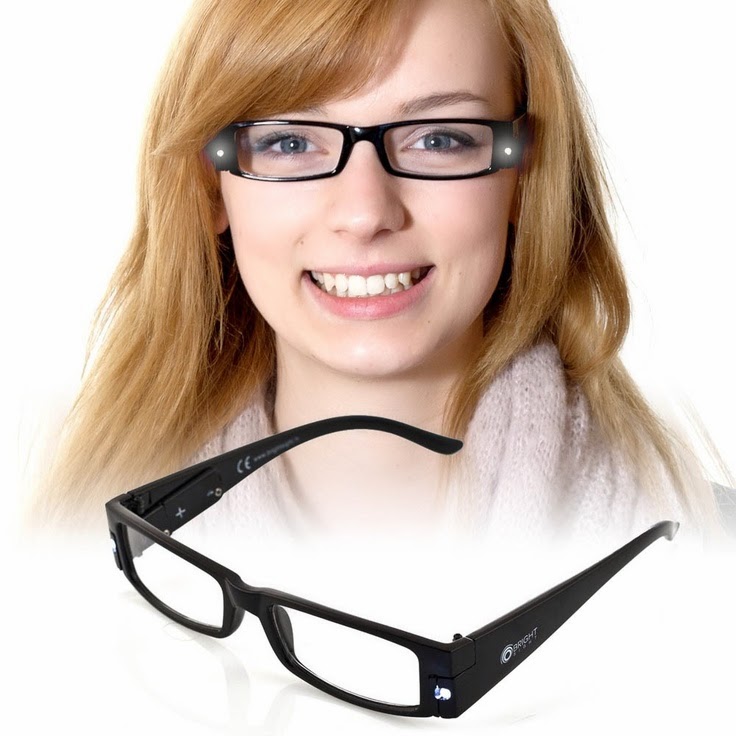One coveted super power would have to be the ability to see in the dark. Think of all the things you could do and see if the dark didn't stop you. That alone is why we love providing our LED reading glasses to folks who want that super power ;) That is also another reason why most of us love things that glow in the dark. Glow sticks, glow in the dark paint, glowing shoe laces, glowing Nightlights, etc. All have that wonder of them. What makes them glow? If you've ever wondered that, we found this great article describing the answer:
How does glow-in-the-dark stuff work?
You see glow-in-the-dark stuff in all kinds of places, but it is most common in toys. My son, for example, has a glow-in-the-dark yo-yo, a glow-in-the-dark ball, a glow-in-the-dark mobile and even (if you can believe it) a pair of glow-in-the-dark pajamas! They make him easier to find at night!
If you have ever seen any of these products, you know that they all have to be "charged". You hold them up to a light, and then take them to a dark place. In the dark they will glow for 10 minutes. Some of the newer glow-in-the-dark stuff will glow for several hours. Usually it is a soft green light, and it is not very bright. You need to be in nearly complete darkness to notice it.
All glow-in-the-dark products contain phosphors. A phosphor is a substance that radiates visible light after being energized. The two places where we most commonly see phosphors are in a TV screen or computer monitor and in fluorescent lights. In a TV screen, an electron beam strikes the phosphor to energize it (See How Television Works for details). In a fluorescent light, ultraviolet light energizes the phosphor. In both cases, what we see is visible light. A color TV screen actually contains thousands of tiny phosphor picture elements that emit three different colors (red, green and blue). In the case of a fluorescent light, there is normally a mixture of phosphors that together create light that looks white to us.
Chemists have created thousands of chemical substances that behave like a phosphor. Phosphors have three characteristics:
- The type of energy they require to be energized
- The color of the visible light that they produce
- The length of time that they glow after being energized (known as the persistence of the phosphor)
To make a glow-in-the-dark toy, what you want is a phosphor that is energized by normal light and that has a very long persistence. Two phosphors that have these properties are Zinc Sulfide and Strontium Aluminate. Strontium Aluminate is newer -- it's what you see in the "super" glow-in-the-dark toys. It has a much longer persistence than Zinc Sulfide does. The phosphor is mixed into a plastic and molded to make most glow-in-the-dark stuff.
Occasionally you will see something glowing, but it does not need charging. The most common place is in the hands of expensive watches. In these products, the phosphor is mixed with a radioactive element, and the radioactive emissions (See How Nuclear Radiation Works) energize the phosphor continuously. In the past, the radioactive element was radium, which has a half-life of 1600 years. Today, most glowing watches use a radioactive isotope of hydrogen called tritium (which has a half-life of 12 years) or promethium, a man-made radioactive element with a half-life of around three years.
Check out more at How Stuff Works





